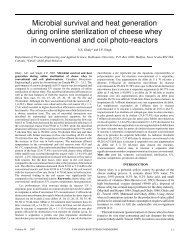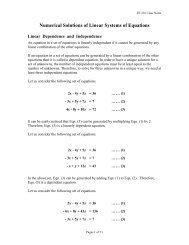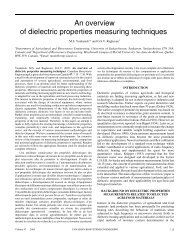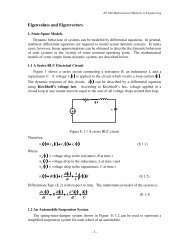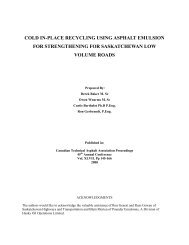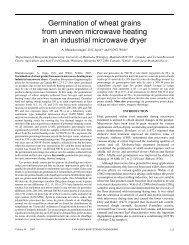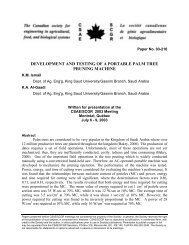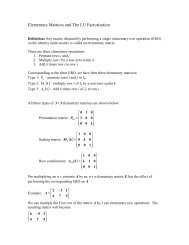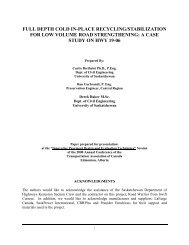Xilinx - Design Reuse Methodology for ASIC and FPGA Designers.pdf
Xilinx - Design Reuse Methodology for ASIC and FPGA Designers.pdf
Xilinx - Design Reuse Methodology for ASIC and FPGA Designers.pdf
You also want an ePaper? Increase the reach of your titles
YUMPU automatically turns print PDFs into web optimized ePapers that Google loves.
264 Verification Strategy<strong>Design</strong> verification <strong>for</strong> <strong>ASIC</strong> system-level <strong>and</strong> reusable macros has consistently been one of themost difficult <strong>and</strong> challenging aspects <strong>for</strong> designers. <strong>FPGA</strong> design methodologies provide aflexible verification strategy resulting in a wide variety of verification methods <strong>and</strong> tools. Often,in smaller non system-level designs, functional simulation is bypassed <strong>and</strong> the designer proceedsdirectly to board level testing with probe points that can be easily added or removed. Timingverification in the <strong>for</strong>m of simulation or static timing are used to test worst-case conditions orpotential race conditions that may not be found during board level testing. The reprogrammabilityof the device allows the designer to easily probe or observe internal nodes. This methodology isvery different from the traditional <strong>ASIC</strong> verification strategy, which requires rigorous testing tominimize the risk of manufacturing an incorrect design. Because of these differences inmethodologies, widespread adoption of verification tools among <strong>FPGA</strong> users have slightly lagged<strong>ASIC</strong> users.4.1 HDL Simulation <strong>and</strong> TestbenchIt is recommended <strong>for</strong> multi-million gate <strong>FPGA</strong>s that an <strong>ASIC</strong> verification methodology be usedthat consists of a verification plan <strong>and</strong> strategy. The verification strategy generally consists ofcompliance, corner, r<strong>and</strong>om, real code <strong>and</strong> regression testing. Modules <strong>and</strong> sub-modules must besimulated <strong>and</strong> documented in order to ensure future usability. In surveys taken of digitaldesigners, verification is often cited as the least favorite activity. A good testbench is more likelyto be reused than the actual design code.Guideline - A testbench methodology is recommended <strong>for</strong> both <strong>ASIC</strong> <strong>and</strong> <strong>FPGA</strong> modulesdesigned <strong>for</strong> reuse. The same HDL simulators can be used to verify <strong>ASIC</strong> <strong>and</strong> <strong>FPGA</strong> designs.4.2 Static TimingFor timing verification, static timing analysis is the most effective method of verifying amodule’s timing per<strong>for</strong>mance. As gate densities increase, gate-level simulators slow down,thereby limiting the number of test vectors that can be run <strong>and</strong> resulting in lower path coverage.Guideline - Static timing provides a faster means to test all paths in the design. However, it isrecommended to use a gate-simulator to check <strong>for</strong> misidentified false paths <strong>and</strong> to check blocksof asynchronous logic. .A noticeable advantage of <strong>FPGA</strong>s is that multiple libraries <strong>and</strong> pre-layout statistical wireloadmodels are not needed. Once the design is implemented, the layout is essentially determined <strong>and</strong>the timing numbers are real. Many <strong>FPGA</strong> vendors such as <strong>Xilinx</strong> <strong>and</strong> Actel also provide theability to test bestcase <strong>and</strong> worstcase conditions <strong>and</strong> to vary the temperature <strong>and</strong> voltage. Varyingthe temperature <strong>and</strong> voltage in an <strong>ASIC</strong> device generally changes the delays. Since <strong>FPGA</strong>vendors usually publish worst case operating conditions <strong>for</strong> the various speedgrades of thedevices. Reducing the maximum temperature <strong>and</strong> or increasing the minimum voltage causesfaster operating condition or pro-rates the delays.



